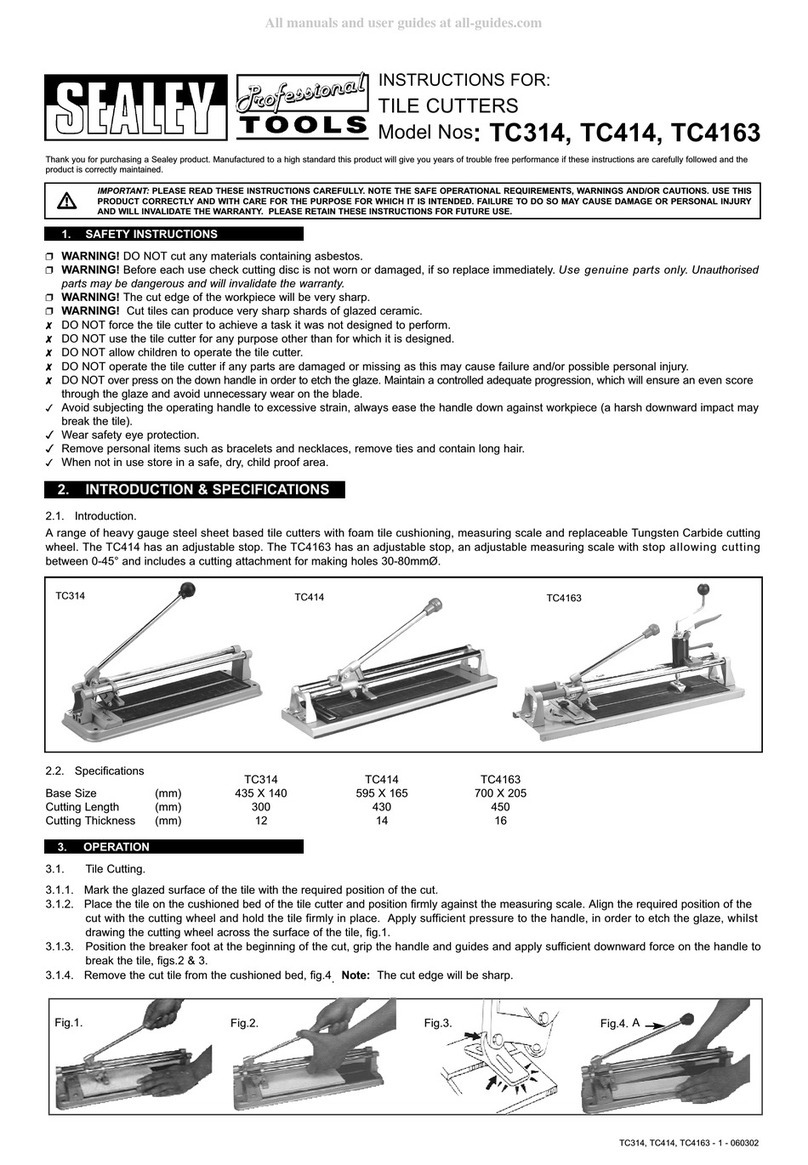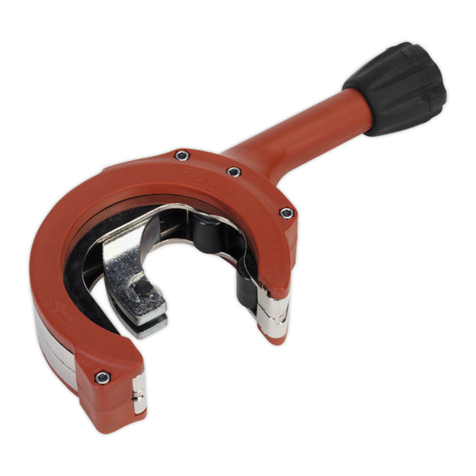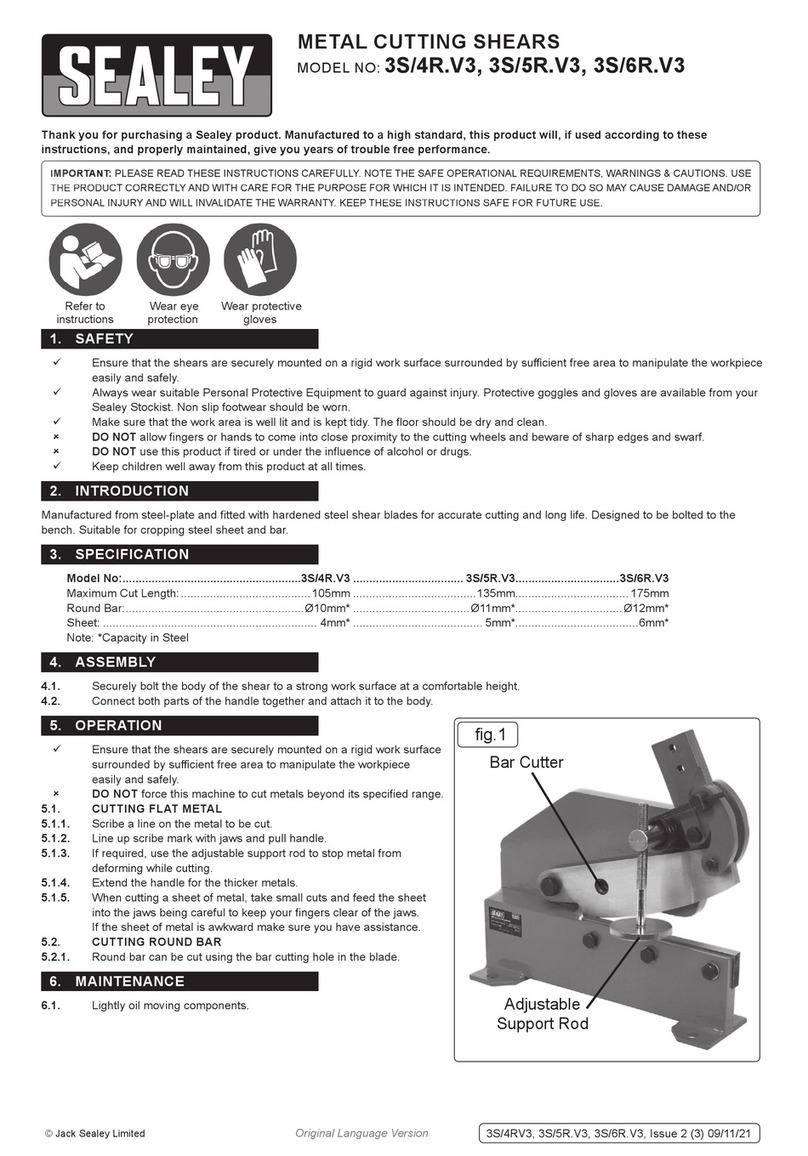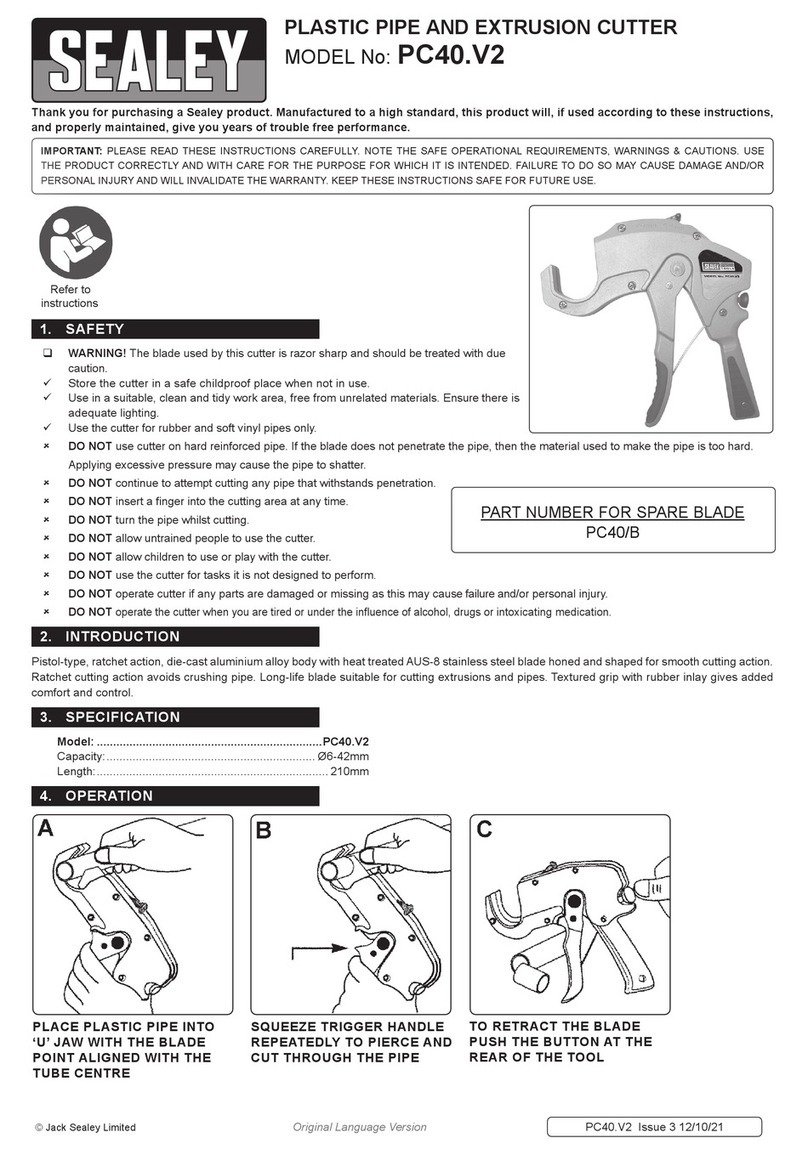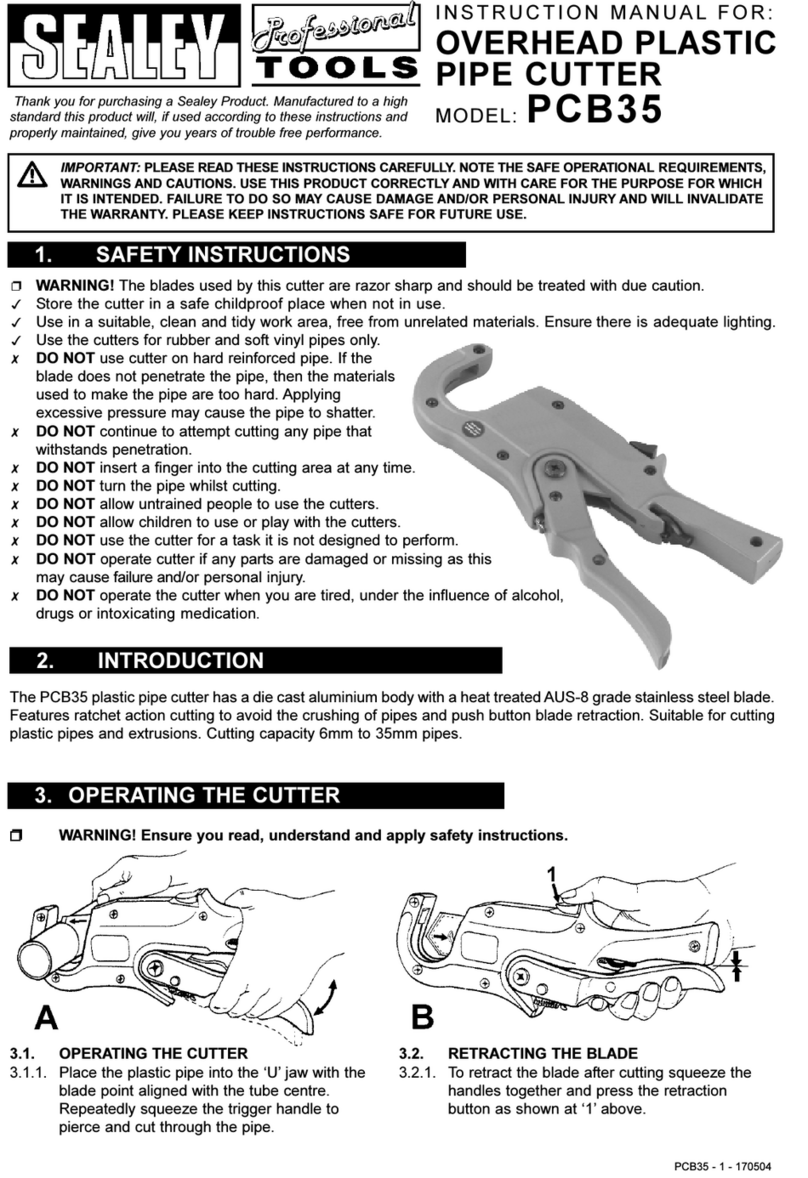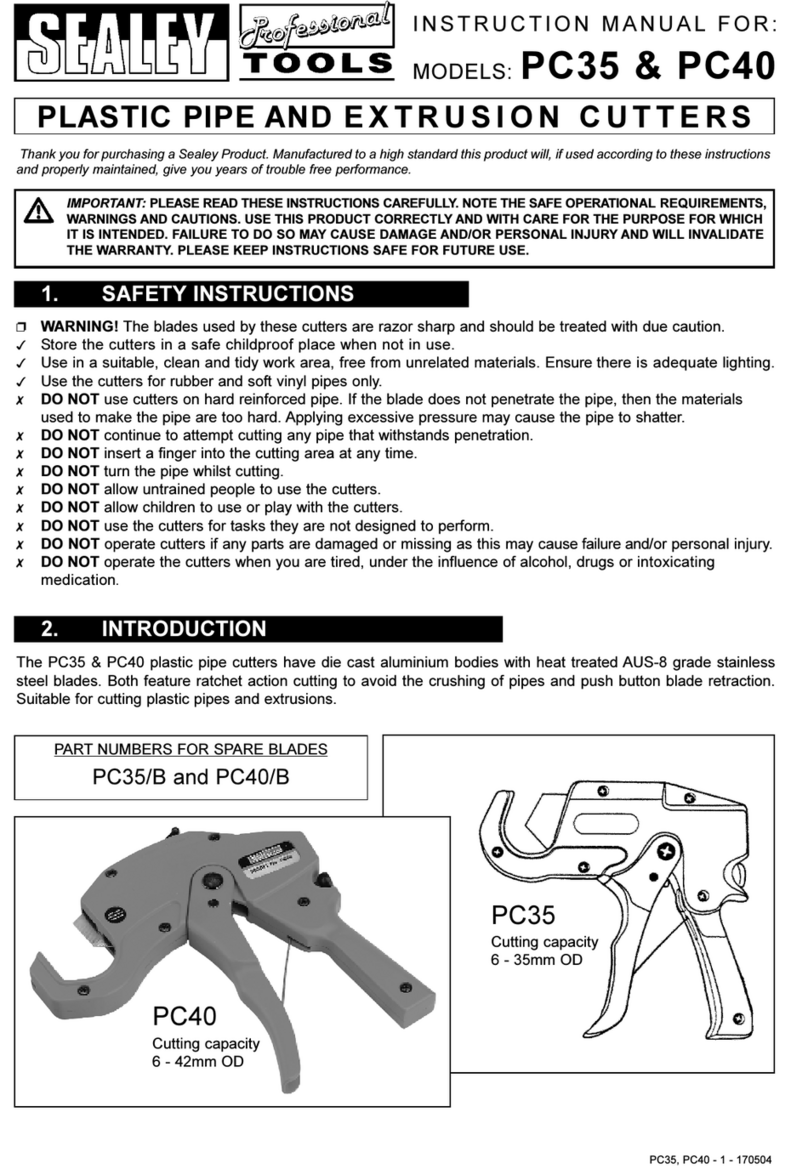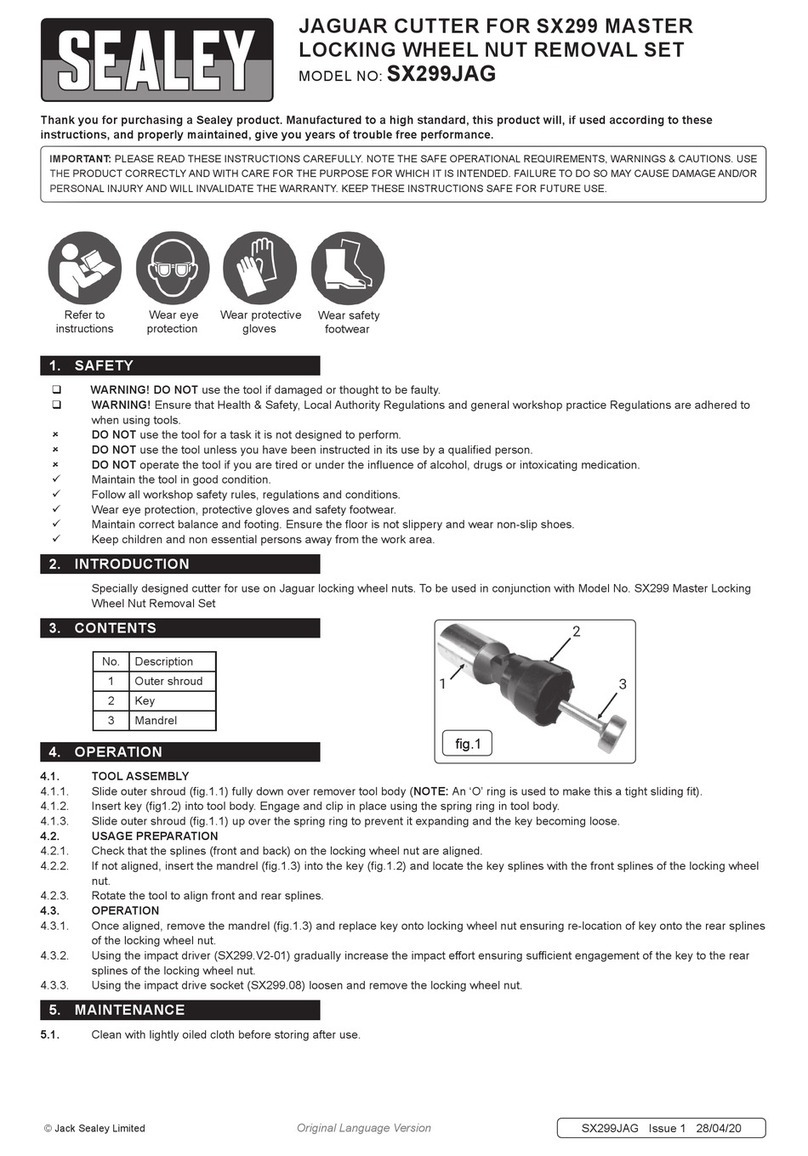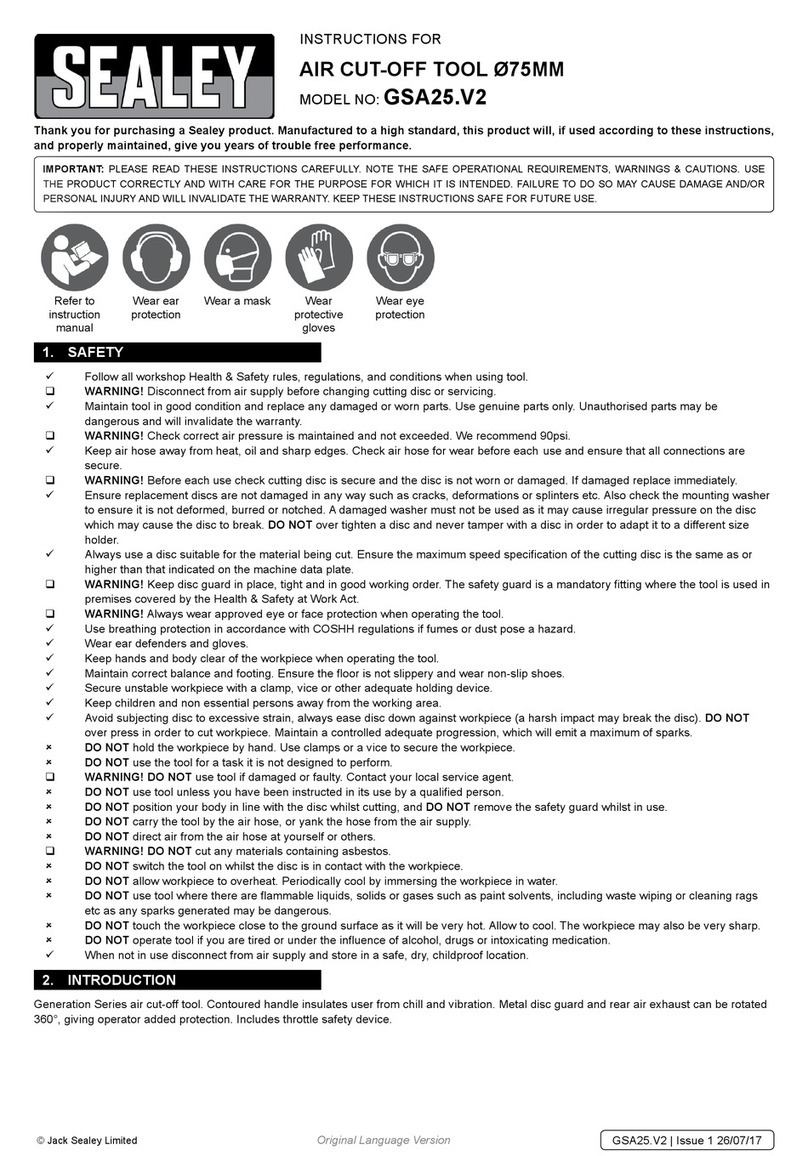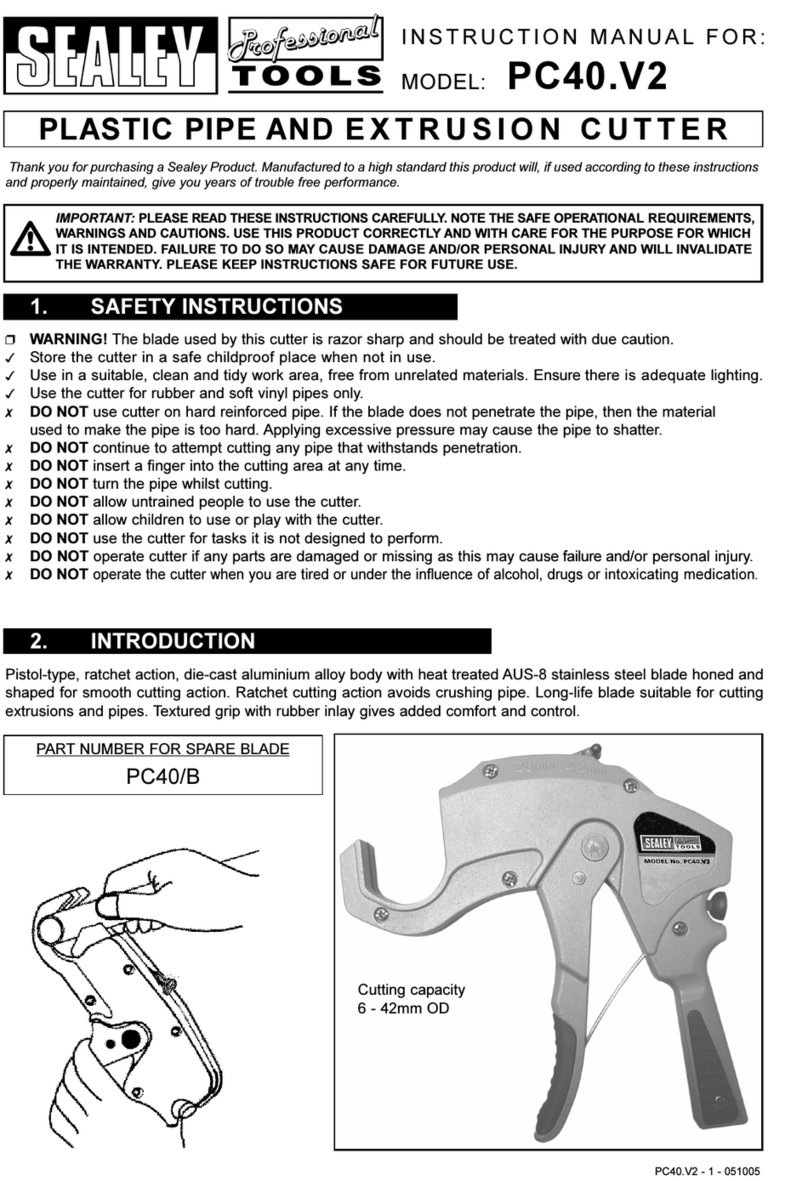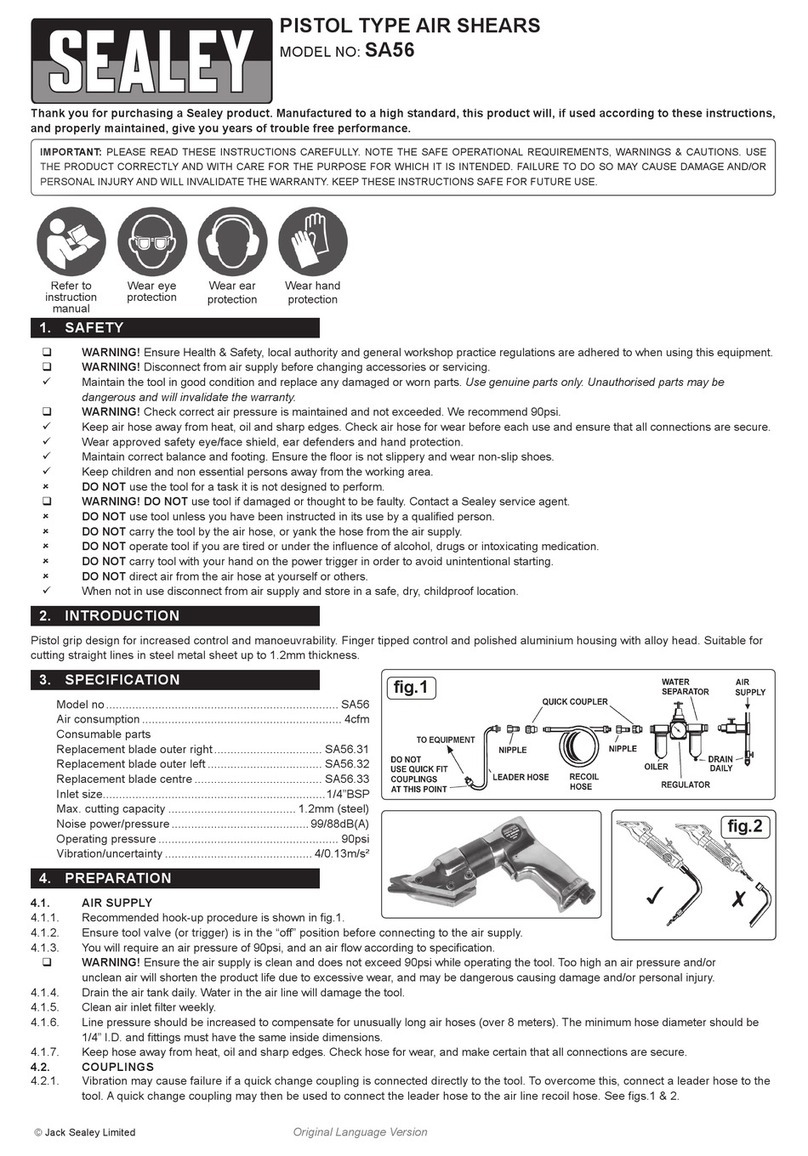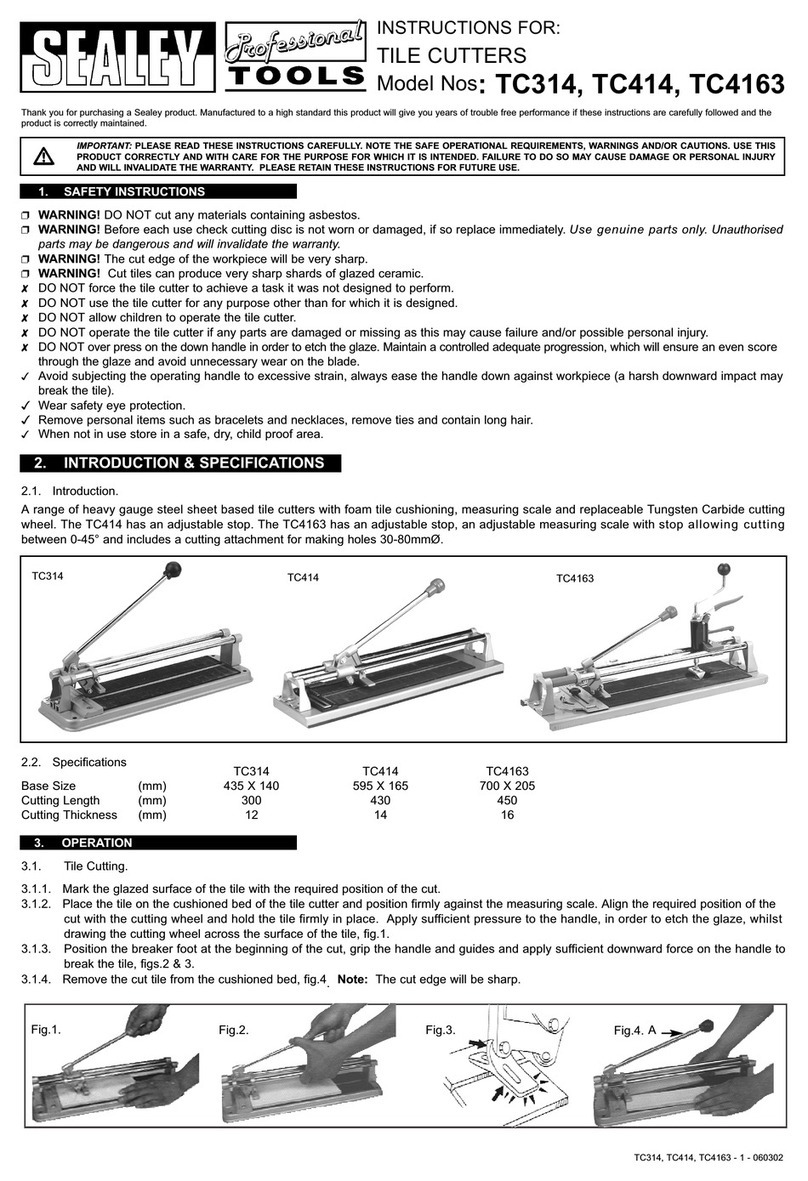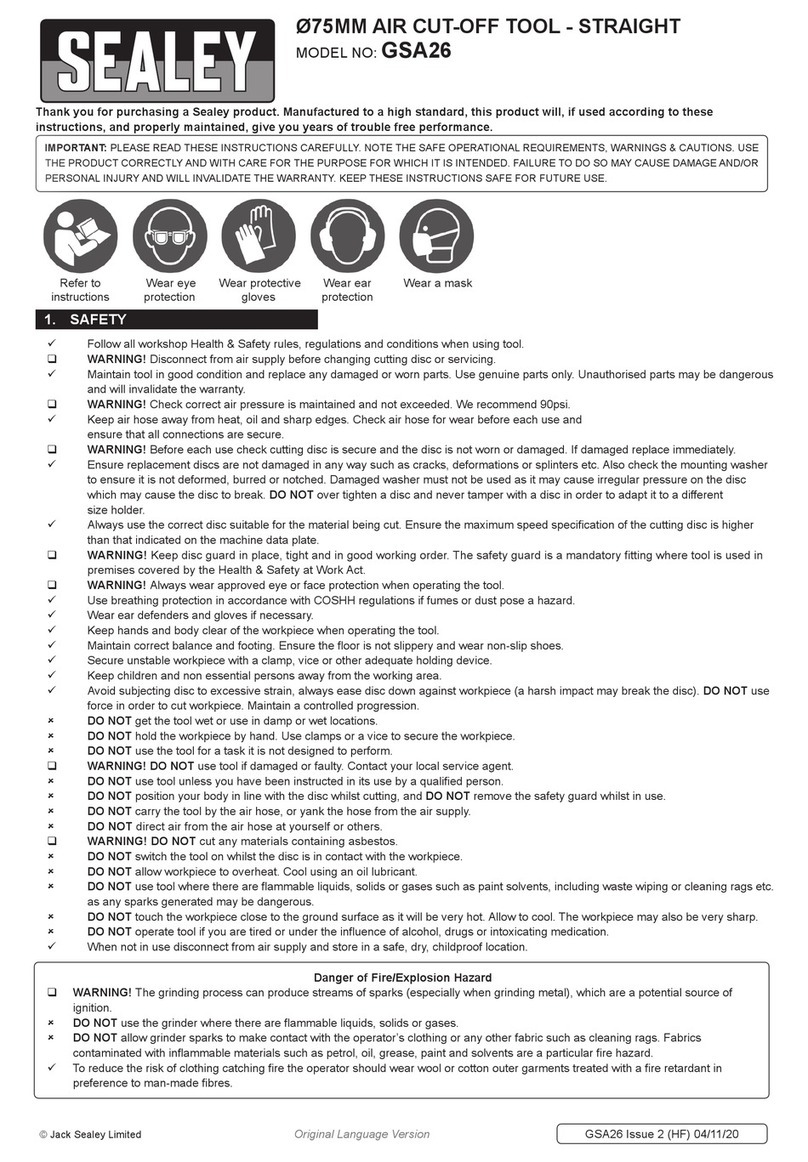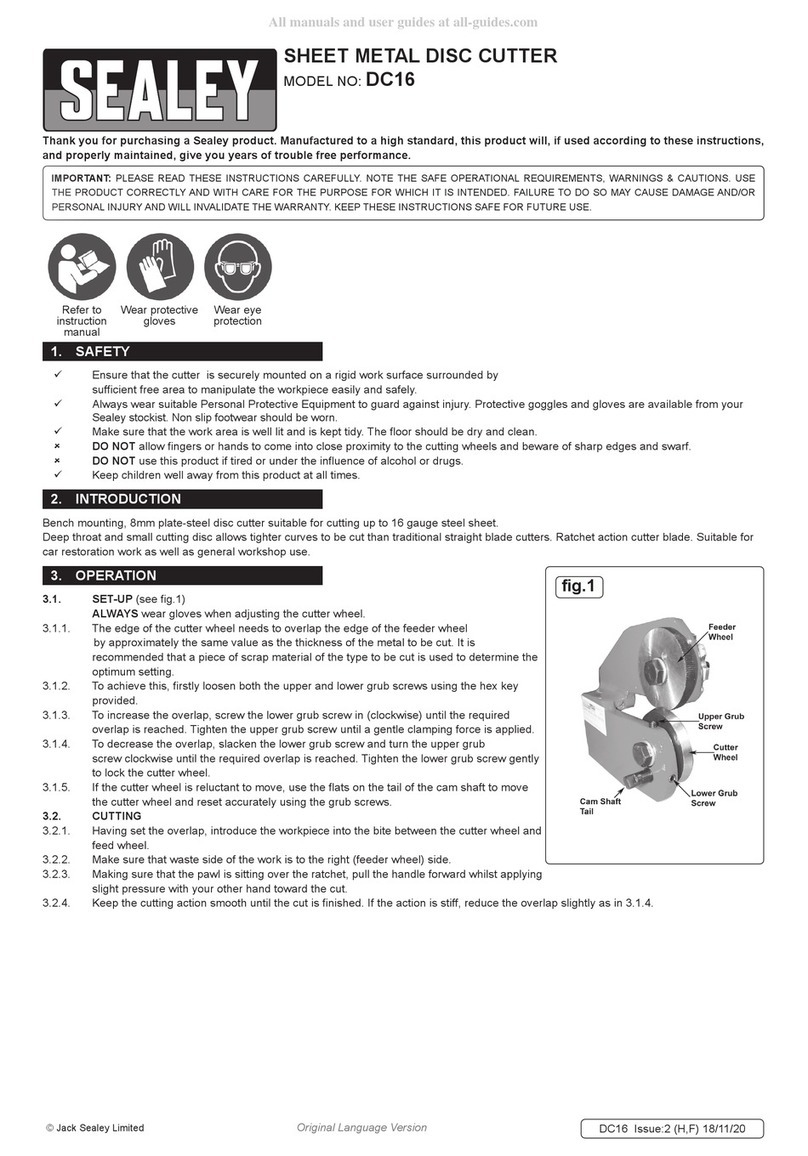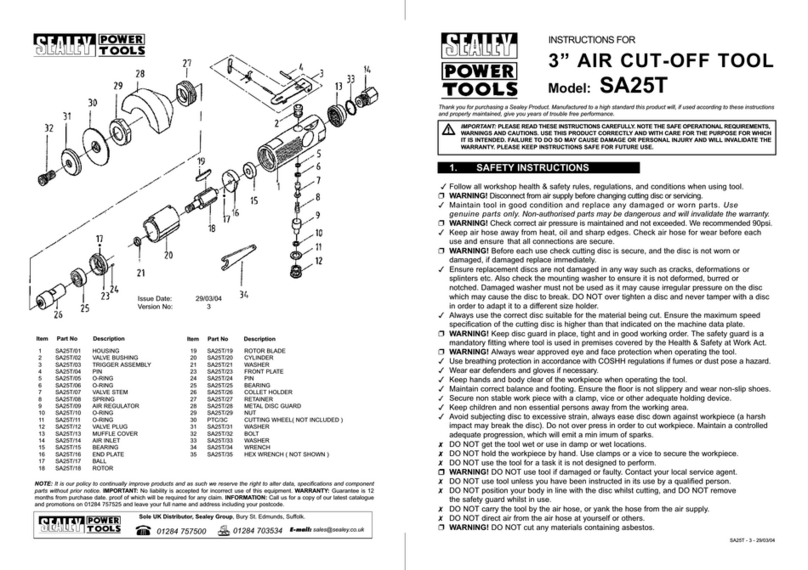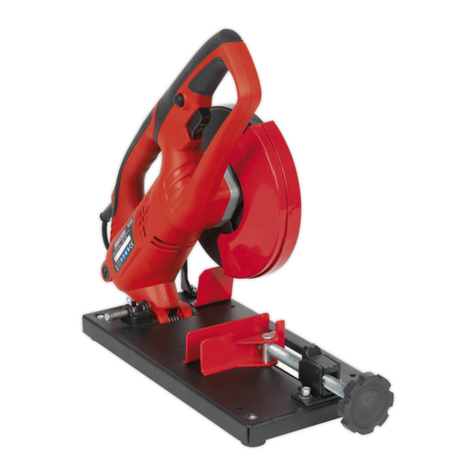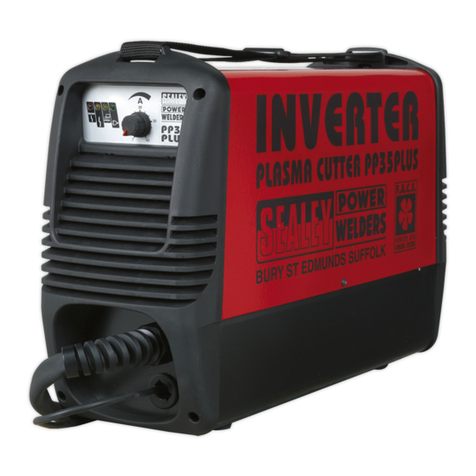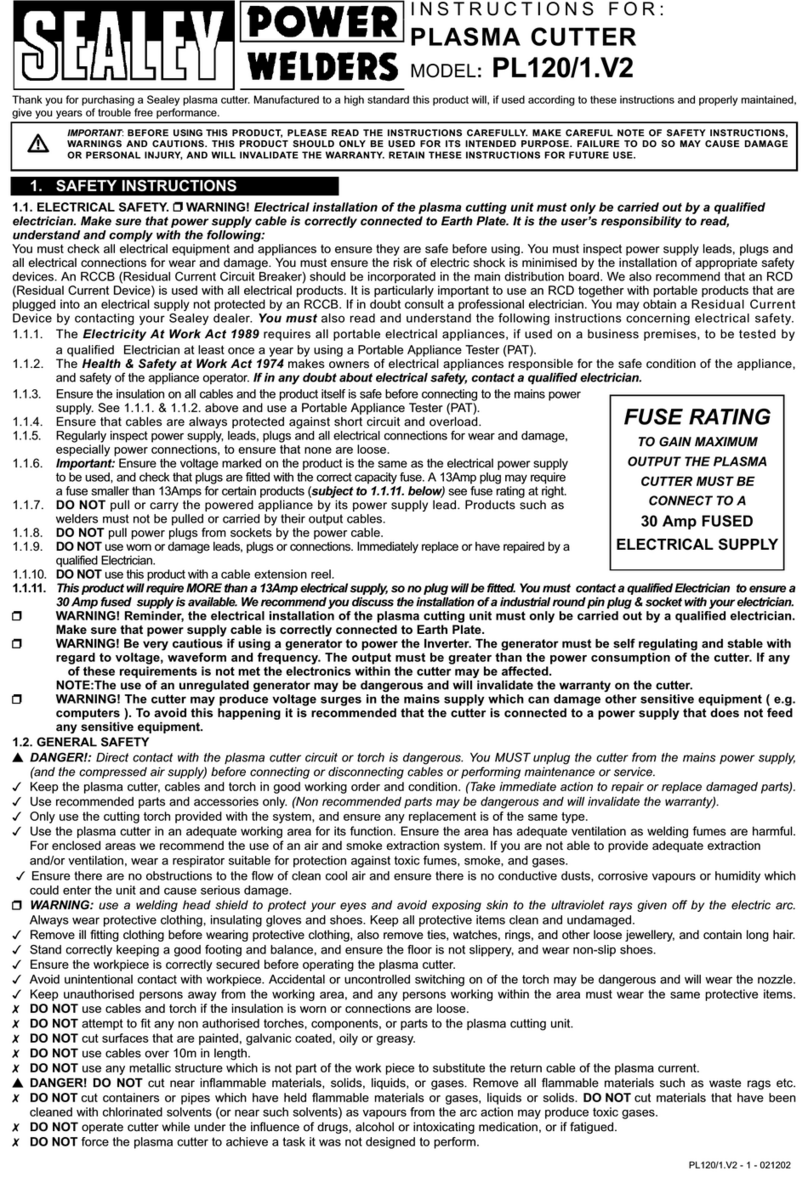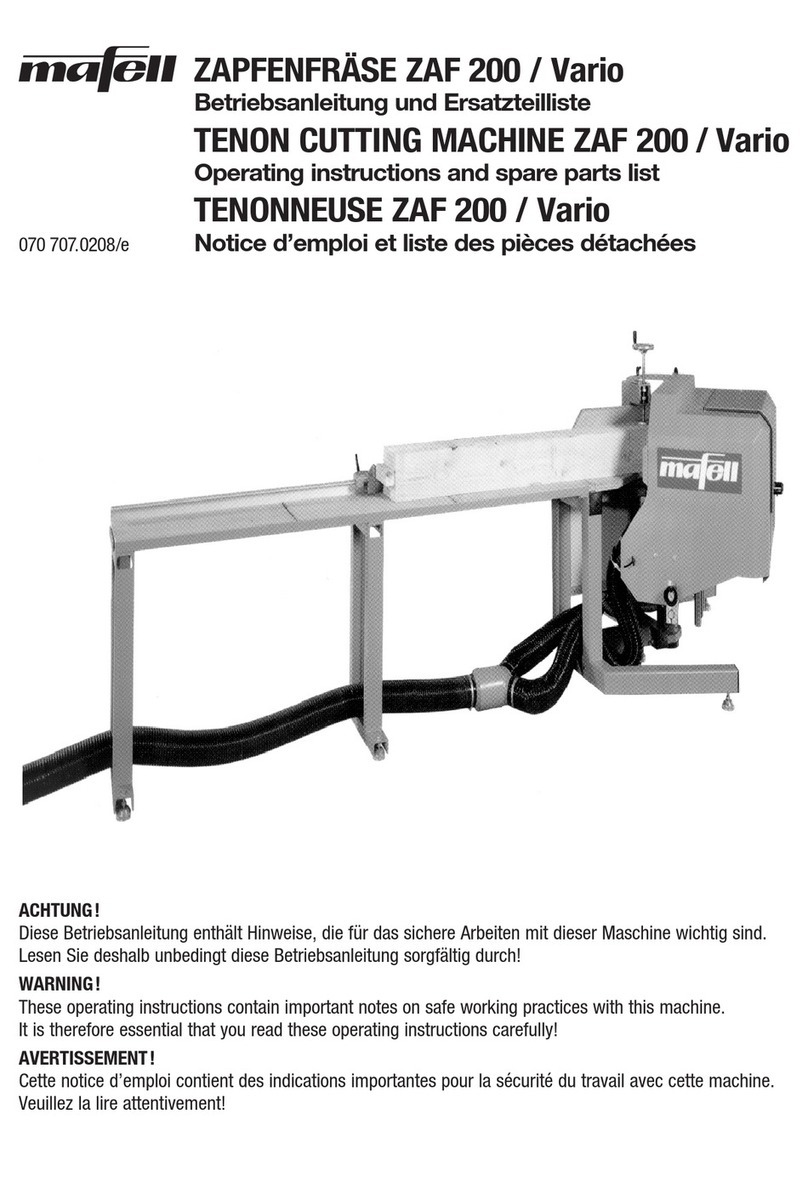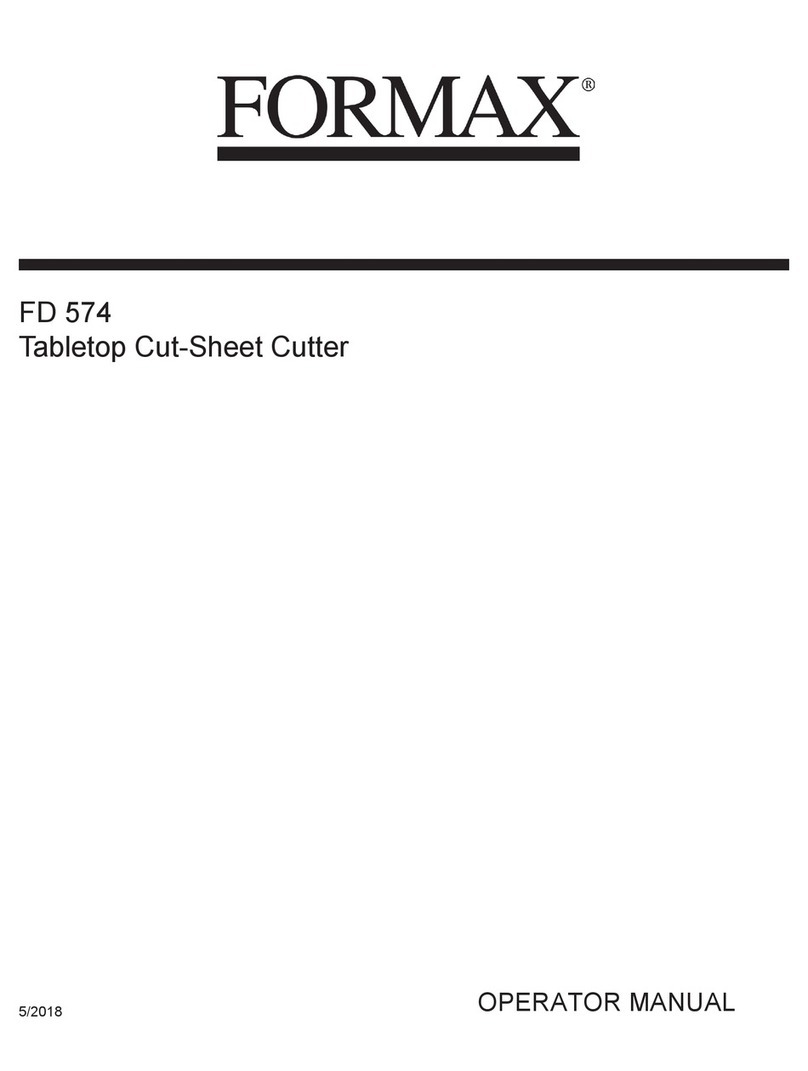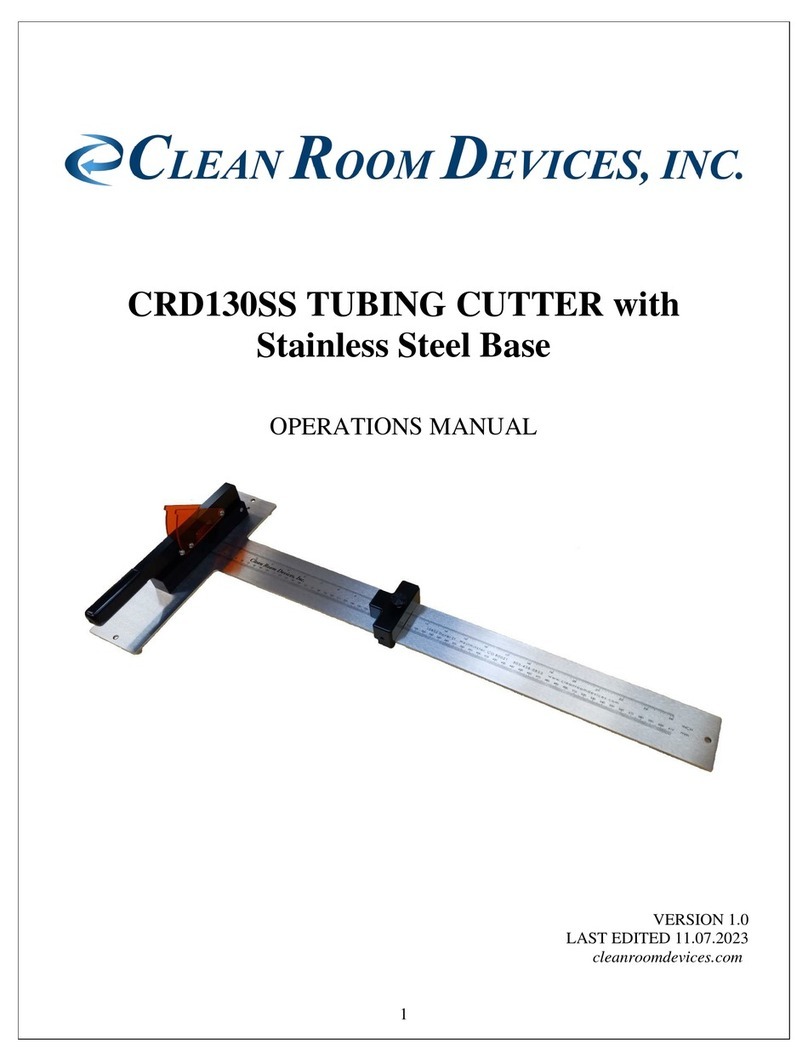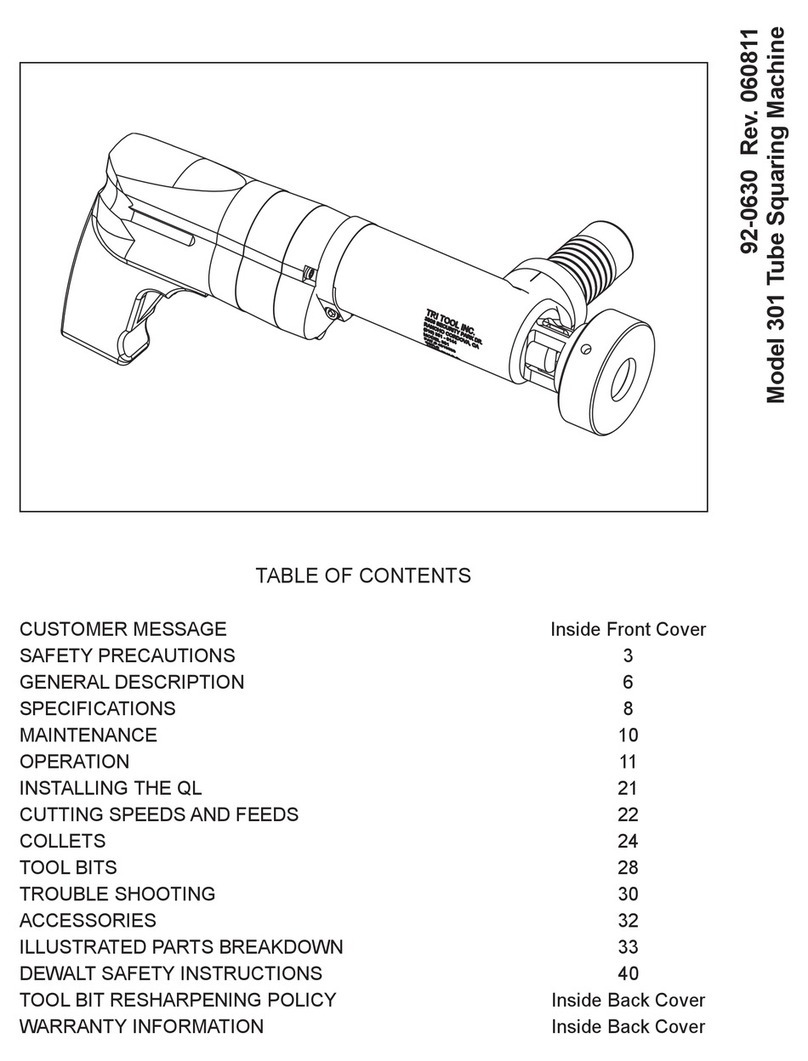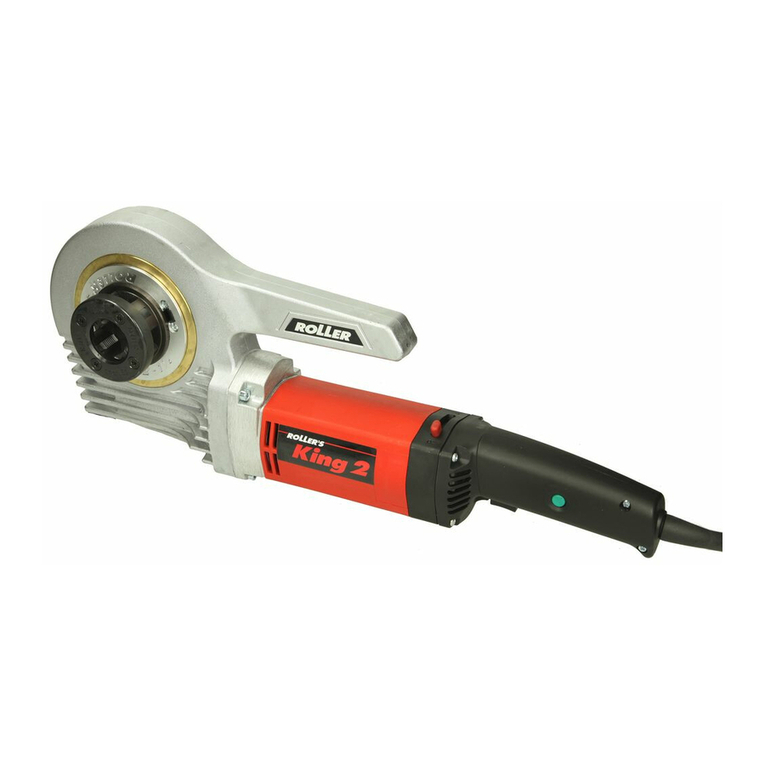required guards.
WARNING! Wear approved safety eye protection, ear defenders and respiratory protection.
9Remove ill-fitting clothing. Remove ties, watches, rings and other loose jewellery and contain long hair.
V Maintain correct balance and footing. Ensure the floor is not slippery and wear non-slip shoes.
9Keep children and unauthorised persons away from the work area.
9Avoid unintentional starting and never leave the cutter running unattended.
8DO NOT use the cutter for a task for which it is not designed.
8DO NOT get cutter wet or use in damp or wet locations or areas where there is condensation.
8DO NOT use cutter where there are flammable liquids, solids or gases such as paint solvents and including waste wiping or cleaning
rags etc.
8DO NOT operate the cutter if any parts are damaged or missing as this may cause failure and/or personal injury.
DO NOT operate the cutter when you are tired or under the influence of alcohol, drugs or intoxicating medication.
1.3. SPECIFIC SAFETY RULES
WARNING! Before each use, check that the blade is secure and not worn or damaged.
9Hold the work piece firmly against the fence.
9Only feed the work piece into the blade against the rotation of the blade.
9Avoid subjecting the blade to excessive strain, never force the work piece. Maintain a controlled progression.
9Should the blade jam switch the power off immediately to prevent damage to the motor.
9TO AVOID WORK PIECE “KICKBACK” (when a work piece is violently thrown back towards you):
a) Keep the blade in good condition.
b) Keep fence parallel to the blade.
c) DO NOT release work piece until it is clear of the blade.
d) DO NOT attempt to cut a work piece that does not have a straight edge to guide along the fence.
9Use a push stick when cutting narrow work pieces.
8DO NOT use your hands (“free-hand”) to guide the work piece. Hold the work piece firmly against the fence to guide it into the blade.
8DO NOT place yourself in an awkward operating position where a slip could cause your hand to move into the cutting blade.
8DO NOT stand, or have any part of your body, in line with the plane of the blade.
8DO NOT hold what will become the off-cut (the waste part of the work piece).
8DO NOT reach over or behind the blade.
8DO NOT attempt to free a jammed blade without first switching off or removing the plug from the mains power supply.
8DO NOT cut any materials other than ceramic tile.
8DO NOT use solvents to clean plastic parts as they may be damaged. Use a soft damp cloth only.
9Store blades in a safe, dry, childproof location.
9When not in use, switch off the cutter and remove the plug from the power supply.
2. INTRODUCTION
Powered by 500W - 230V electric motor with thermal overload protection and VDE approved magnetic safety switch. Chrome plated table tilts
from 0° to 45° and is tted with adjustable parallel cutting fence. Also includes 45° cutting guide. Supplied with Ø180mm continuous rimmed
diamond cutting blade suitable for glazed ceramic, porcelain, quarry, slate and natural stone tiles. Incorporates 3.5ltr capacity water reservoir
for blade cooling. Fitted with BS approved non-rewirable plug.
3. SPECIFICATION
Model No................................................................ TC180.V2
Motor Power........................................................ 500W-230V
Blade Size/Bore ..................................................Ø180/22mm
Speed.......................................................................2800rpm
Table Size .........................................................395 x 385mm
Max. Cutting Depth 90° ................................................ 35mm
Max. Cutting Depth 45° ................................................ 25mm
4. MOUNTING
The cutter should be used on a sturdy workbench (or similar). Ensure that the supporting surface is strong enough to take the weight of the
cutter and the work piece during operation.
WARNING! Dust can be harmful if inhaled. Ensure that there is adequate ventilation and wear respiratory protection.
5. ADJUSTMENTS
5.1. ON/OFF SWITCH
The cutter has an magnetic switch (fig.1.5) located
on front of the machine. Push the “I“ button for ON
and the “O“ for OFF.
WARNING! ENSURE CUTTER IS SWITCHED
OFF AND DISCONNECTED FROM THE MAINS
POWER BEFORE MAKING ADJUSTMENTS.
5.2. TABLE TILT (for bevel cutting)
To tilt the table, loosen both front and rear tilting
lock knobs (fig. 1.4) and adjust table to the required
angle. Re-tighten the locking knobs.
WARNING! Ensure the lock knobs are securely
tightened to prevent table movement during cutting.
5.3. FENCE
5.3.1. Loosen the clamp screw (fig. 1.3) and adjust the
fence (fig. 1.2) so that the required cut line on the
tile aligns with the blade when the tile is held firmly
against the fence face.
TC180.V2 | Issue 3 05/12/16
Original Language Version
© Jack Sealey Limited
g.1


